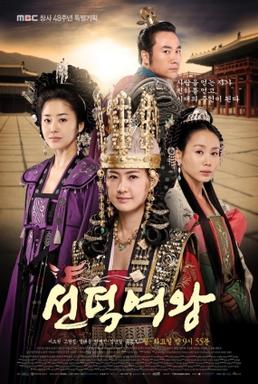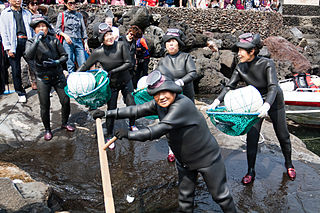
Busan, officially Busan Metropolitan City, is South Korea's second most populous city after Seoul, with a population of over 3.3 million inhabitants as of 2024. Formerly romanized as Pusan, it is the economic, cultural and educational center of southeastern South Korea, with its port being South Korea's busiest and the sixth-busiest in the world. The surrounding "Southeastern Maritime Industrial Region" is South Korea's largest industrial area. The large volumes of port traffic and urban population in excess of 1 million make Busan a Large-Port metropolis using the Southampton System of Port-City classification. As of 2019, Busan Port is the primary port in Korea and the world's sixth-largest container port.

Daejeon is South Korea's fifth-largest metropolis, with a population of 1.5 million as of 2019. Located in a central lowland valley between the Sobaek Mountains and the Geum River, the city is known both as a technology and research center, and for its close relationship with the natural environment. Daejeon serves as a hub of transportation for major rail and road routes, and is approximately 50 minutes from the capital, Seoul, by KTX or SRT high speed rail.

Jeju Province, officially Jeju Special Self-Governing Province, is the southernmost province of South Korea, consisting of eight inhabited and 55 uninhabited islands, including Mara Island, Udo Island, the Chuja Archipelago, and the country's largest island, Jeju Island. The province is located in the Korea Strait, with the Korean Peninsula to the northwest, Japan to the east, and China to the west. The province has two cities: the capital Jeju City, on the northern half of the island and Seogwipo, on the southern half of the island. The island is home to the shield volcano Hallasan, the highest point in South Korea. Jeju and Korean are the official languages of the province, and the vast majority of residents are bilingual.

The Three Kingdoms of Korea or Samhan competed for hegemony over the Korean Peninsula during the ancient period of Korean history. During the Three Kingdoms period (Korean: 삼국시대), many states and statelets consolidated until, after Buyeo was annexed in 494 and Gaya was annexed in 562, only three remained on the Korean Peninsula: Goguryeo, Baekje and Silla. The "Korean Three Kingdoms" contributed to what would become Korea; and the Goguryeo, Baekje and Silla peoples became the Korean people.

Wonju is the most populous city in Gangwon Province, South Korea, with a population of 364,860 as of 2023. The city is located approximately 140 kilometres (87 mi) east of Seoul.

Suncheon (Suncheon-si) is the largest city in Jeollanam-do, South Korea, with a population of 280,719 as of 2022. It is located in the southeast of the province and is a scenic agricultural and industrial city, known for tourist attractions, such as Suncheon Bay. The port city of Yeosu is around forty minutes south of Suncheon and Gwangyang twenty minutes to the east of the city.

Gyeongju, historically known as Seorabeol, is a coastal city in the far southeastern corner of North Gyeongsang Province, South Korea. It is the second largest city by area in the province after Andong, covering 1,324 km2 (511 sq mi) with a population of 264,091 people as of December 2012. Gyeongju is 370 km (230 mi) southeast of Seoul, and 55 km (34 mi) east of Daegu. The city borders Cheongdo and Yeongcheon to the west, Ulsan to the south and Pohang to the north, while to the east lies the coast of the Sea of Japan. Numerous low mountains—outliers of the Taebaek range—are scattered around the city.

South Korea is made up of 22 first-tier administrative divisions: 6 metropolitan cities, 1 special city, 1 special self-governing city, and 14 provinces, including three special self-governing provinces and five claimed by the ROK government. These are further subdivided into a variety of smaller entities, including cities, counties, districts, towns, townships, neighborhoods and villages.

Seogwipo is the second-largest city on Jeju Island, settled on a rocky volcanic coastline in the southern part of Jeju Province, South Korea. In July 2006, Seogwipo's boundaries were expanded to include the entire southern half of Jeju island. A UNESCO World Heritage Site and 2002 FIFA World Cup host, it had a population of 192,566 as of the end of February, 2024.

Gimcheon is a city in North Gyeongsang Province, South Korea. It is situated on the major land transportation routes between Seoul and Busan, namely the Gyeongbu Expressway and Gyeongbu Line railway.

Mungyeong is a city in North Gyeongsang Province, South Korea. The local government, economy, and transportation networks are all centered in Jeomchon, the principal town. Mungyeong has a lengthy history, and is known today for its various historic and scenic tourist attractions. The city's name means roughly "hearing good news." Recently, development has been somewhat stagnant with the decline of the coal industry. Since the 1990s, the proportion of people who rely on the tourism industry through Mungyeong Saejae has gradually increased.

Dongdaemun District is one of the 25 districts of Seoul, South Korea.

Queen Seondeok is a 2009 South Korean historical drama produced by MBC and Time Box Production for the former's 48th founding anniversary, starring Lee Yo-won, Go Hyun-jung, Uhm Tae-woong, Kim Nam-gil, and Park Ye-jin. It chronicles the life of Queen Seondeok of Silla. It aired on MBC from May 25 to December 22, 2009 on Mondays and Tuesdays at 21:55 for 62 episodes.
The Jeju Free International City Development Center (JDC) is a special corporation, established for simultaneously pursuing publicity and business feasibility to successfully implement Jeju Free International City development projects under the South Korean government's Special Act on Jeju Free International City. The corporation is affiliated with the Ministry of Construction and Transportation as a government-sponsored organization.

The Great Merchant is a 2010 South Korean historical drama starring Lee Mi-yeon, Han Jae-suk, Park Sol-mi, Ha Seok-jin, and Go Doo-shim. It aired on KBS1 from March 6 to June 13, 2010 on Saturdays and Sundays at 20:40 for 30 episodes.

Dream of the Emperor is a South Korean television series that aired on KBS1 from September 8, 2012 to June 9, 2013 on Saturdays and Sundays at 21:40 for 70 episodes.

Jiseul (Korean: 지슬) is a 2012 South Korean war drama film written and directed by Jeju Island native O Muel. The film is shot in black and white with the entire cast composed of local actors speaking their natural dialect. "Jiseul" means "potato" in Jeju dialect. O said he picked it as the title of his film because "potatoes are considered a staple food in many countries, often symbolizing survival and hope." Set during the Jeju Uprising on the island in 1948, O said the film does not focus on the large-scale struggle, but on a forgotten true story about a group of villagers who hid in a cave for 60 days to escape from a military attack. They hid underground for months, cold and numb, far too close for comfort—just like the potatoes to which the title refers.

Changnyeong-eup is a town (eup) in the administrative county of Changnyeong, South Gyeongsang Province, in South Korea.
Kim Man-deok (1739–1812), also known as "Man-deok halmang", was a Korean merchant and businesswoman of Joseon. When a major famine hit Jeju Island, all of the rice she had bought on land was freed and donated to save the starving people of the island. After her death, contemporaries wrote her biography and poems in her honor.

The Jeju people or Jejuans are a Korean sub-ethnic group native to Jeju Island, which is geographically located in the East China Sea. Administratively, they live in Jeju Province, an autonomous self-governing province of South Korea.



















